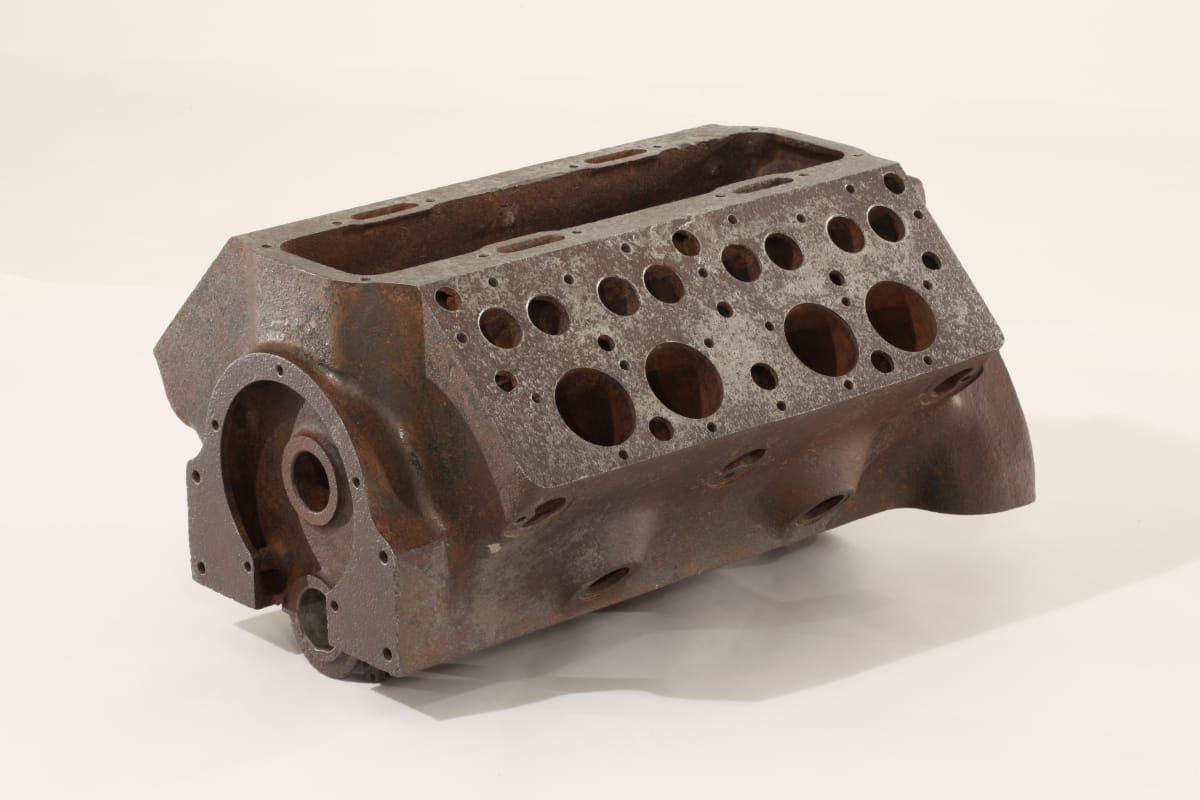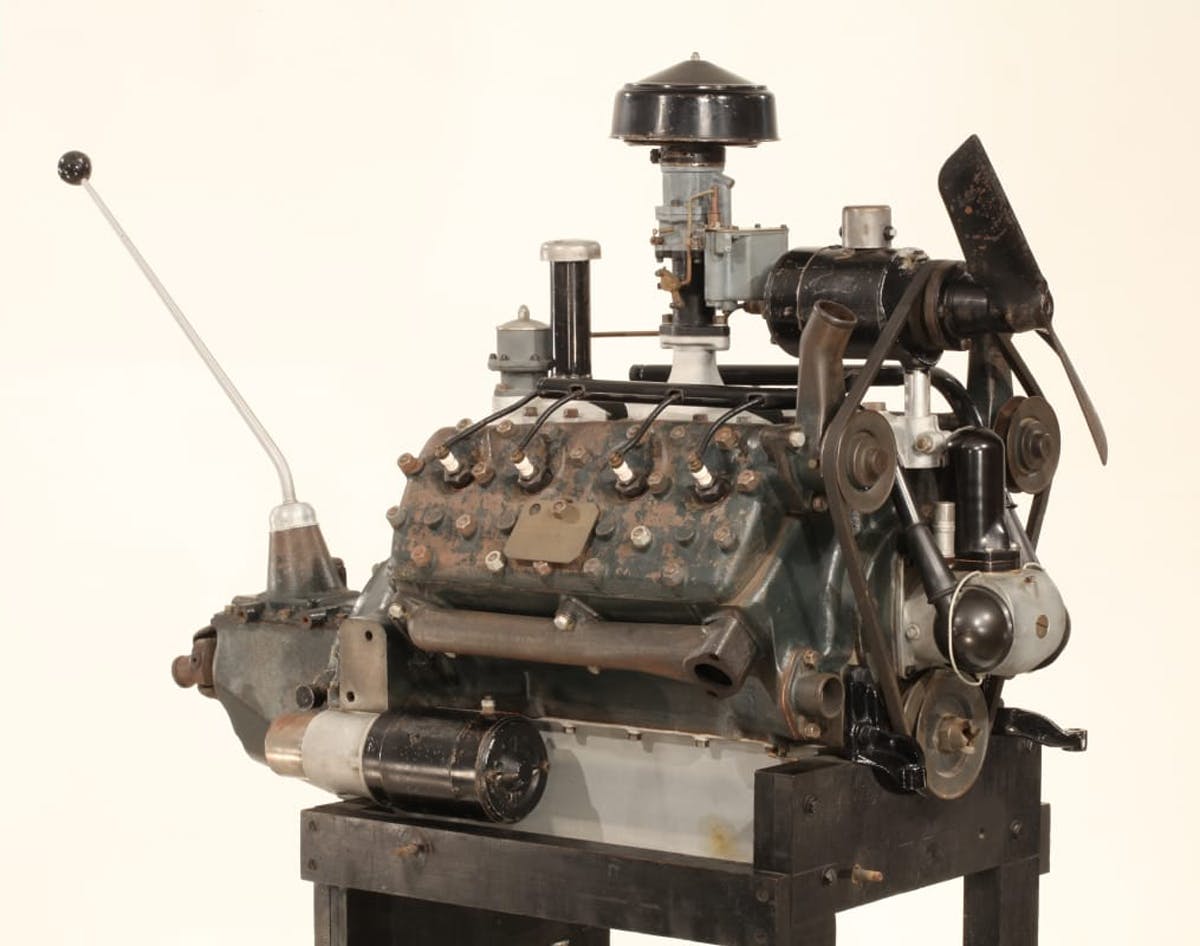Media | Articles
By the Numbers: How Ford Built 15 Million Flatheads
This story first appeared in the September/October 2024 issue of Hagerty Drivers Club magazine. Join the club to receive our award-winning magazine and enjoy insider access to automotive events, discounts, roadside assistance, and more.
Making a powerful engine is easy. Making 15 million of them requires something more.
The simplest stuff often takes the most work. That was certainly the case for the flathead. Ford’s quest to create an affordable, mass-production V-8 required a $50 million investment (more than $1 billion in today’s dollars).
Ford design engineer Charles Sorensen’s strategy was to integrate as many components as possible into a single elaborate casting to save cost, weight, and machining. FoMoCo’s final design combined eight cylinders, the upper half of the crankcase, oil galleries, coolant passages, the flywheel housing, and all intake and exhaust runners into a single iron casting.



Two Ford Model A four-cylinder water pumps were employed to save cost. The “flat” heads were drilled and tapped for spark plugs, and they provided combustion-chamber clearance for the opening valves. While the intake runners were nicely direct, exhaust passages had to wrap either around the ends of the block or between the two center cylinders. To resolve overheating issues, water pumps were moved from the heads to the block after a few years of production. Carburetion advanced from a single- to a two-barrel Stromberg riding atop a two-plane intake manifold in 1934.


The result was a genuinely mass-production V-8, with a single Dearborn, Michigan, foundry supplying 3000 engines per day to 33 Ford assembly plants. Machining required less than three hours. A bare block became a fully assembled V-8 in two hours.
The engine at launch delivered five more horses than Chevy’s overhead-valve six and was notably lighter and more compact. Pricing initially ranged between $460 and $650 (about $10,000 to $14,000 today). No wonder it was a hit. Nearly 100,000 customers placed orders for the ’32 Ford V-8 sight unseen. By the time production ended, more than 15 million had been built.
Marketplace
Buy and sell classics with confidence









I love the flathead engine! I have been around them for most of my life, and own 4 of them ( 3 8ba and 1 60 hp ). They get a bad rap for the inherent design flaws, but the engine is a testament to the era in which it was built. The overall cool factor is what I like. They are simple, reliable, easy to own engines. A great source of amusement for me is when someone who is unfamiliar with one, sees it, and calls it a hemi. Another head scratcher is when they see eight sparkplugs and six exhaust ports. I’ve had to explain that it isn’t a V6 more than once.
“testament to the era in which it was built”.
That is something that is easy for modern man to forget.
Yes, one of my first cars was a 54 Customline. It had a Merc engine with a power brake booster. A nice two tone brown and cream color. It had been an executives car so they dressed it up a bit. That ICM engine (pale green color) would really go. I was 17 then really proud of it. The rust worm got finally got it.
Great car but 54 was not a flathead. It was the first year of the OHV engine
Yes the OHV V8 was introduced in 1954 in the US however Canadian buyers waited until 1955.
Great source of automotive history and development,
Looking forward to reading your next piece.
There is a great book about how one man SAVED the Ford flathead V8 after WWII. Ford developed a modern OHV inline six to match Chevy and the plan was to STOP production of the flathead V8 to save money!! One man convinced Ford management to keep the flathead V8 in production. A true story. “The Man Who Saved the V8” by Chase Morsey Jr. One of the best books I’ve read about Ford history.
Pricing initially ranged between $460 and $650 (about $10,000 to $14,000 today). That makes your crate engine sound less crazy in pricing. Inflation is crazy.
Those prices are for the entire car.
The v-8 sixty was a mistake. It was very underpowered. People that used them in racecars were on to something, but as used in a conventional auto, it was a joke.